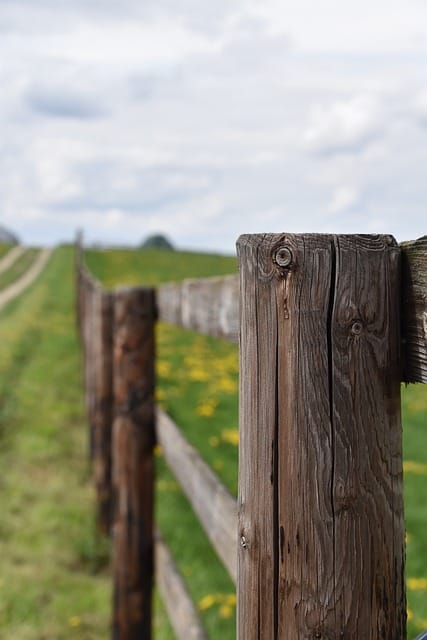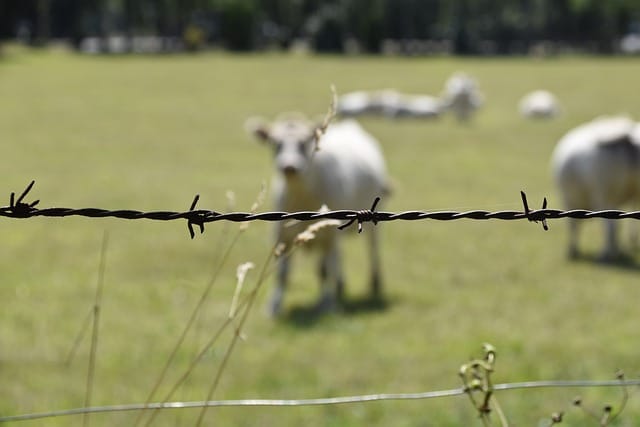The Ultimate Guide to Choosing the Right Fence Posts for Your Farm
Choosing the right farm fence posts is not just a matter of aesthetics; it’s a critical decision that impacts the security of your livestock, the longevity of your fencing system, and your overall farm management efficiency. With a variety of materials, sizes, and installation methods available, making the optimal choice can seem daunting. This ultimate guide will walk you through everything you need to know about selecting the perfect farm fence posts for your specific needs, ensuring your investment stands strong for years to come.
Why Your Choice of Farm Fence Posts Matters
Before diving into the different types of fence posts, it’s essential to understand why this component is so crucial. Fence posts are the backbone of your entire fencing structure. They bear the tension of the wires or rails, withstand environmental pressures like wind and rain, and resist the force exerted by livestock. Choosing inadequate posts can lead to frequent repairs, escaped animals, and ultimately, higher costs and more labor in the long run. Investing in high-quality, appropriate farm fence posts from the outset is a smart move for any serious farmer. You can also check Best Wooden Fencing Company in Texas Frisco
Understanding Different Fence Post Materials
The material of your fence post is perhaps the most significant factor influencing its durability, cost, and suitability for different applications. Let’s explore the most common options available:
1. Wooden Fence Posts: The Traditional Choice

Wood has been the traditional material for farm fence posts for centuries, and for good reason. It’s readily available, relatively inexpensive, and offers a natural aesthetic that blends well with rural landscapes.
Types of Wood:
- Pressure-Treated Pine (PTP): This is one of the most common choices due to its affordability and resistance to rot and insect infestation, thanks to chemical treatment. Ensure you choose posts treated for ground contact.
- Cedar: Naturally resistant to decay and insects, cedar posts are a durable option, though often more expensive than PTP.
- Oak: Known for its strength and durability, oak posts can last a long time, especially if the heartwood is used. However, they can be heavy and harder to work with.
- Locust (Black Locust): Highly regarded for its exceptional rot resistance and longevity, often outlasting even treated pine. It can be pricier and harder to find in some areas.
Pros of Wooden Posts:
- Good insulator, making them suitable for electric fencing without additional insulators in some cases (though insulators are still recommended for reliability).
- Relatively easy to install with standard tools.
- Can absorb some impact, which can be beneficial with livestock.
Cons of Wooden Posts:
- Susceptible to rot, decay, and insect damage if not properly treated or if the treatment wears off.
- Can be inconsistent in terms of quality and lifespan.
- Can be heavy, especially larger diameter posts.
- Flammable.
Affiliate Link Suggestion: For high-quality pressure-treated pine posts, check out the selection at [Your Local Farm Supply Store Name or Generic Retailer like Home Depot/Lowe’s – actual link to be inserted here].
2. Metal Fence Posts: Strength and Durability

Metal fence posts offer excellent strength and a long lifespan, making them a popular choice for various farming applications, especially for livestock containment.
Types of Metal Posts:
- Steel T-Posts: These are a staple on many farms. They are relatively lightweight, easy to drive into the ground, and have studs or nubs for easily attaching wire fencing. They come in various weights and lengths.
- Pipe Posts (Galvanized Steel): Heavier and more robust than T-posts, pipe posts are often used for corners, gate posts, and high-stress areas. They offer superior strength and longevity.
- U-Posts: Similar to T-posts but with a U-shaped profile, often lighter duty.
Pros of Metal Posts:
- Very durable and strong, especially pipe posts.
- Resistant to fire, rot, and insects.
- Relatively consistent in quality and dimensions.
- T-posts are easy and quick to install.
Cons of Metal Posts:
- Can be more expensive than some wood options, particularly pipe posts.
- Conduct electricity, requiring insulators for electric fences.
- Can bend under extreme pressure (T-posts) or rust if the protective coating is damaged.
- Installation of pipe posts can be more labor-intensive, sometimes requiring concrete.
Affiliate Link Suggestion: Looking for reliable T-posts? [Brand Name T-Posts on Amazon or Tractor Supply Co. – actual link to be inserted here] offer excellent value and durability.
3. Concrete Fence Posts: The Long-Term Solution
Concrete posts are known for their exceptional durability and longevity. While they might have a higher upfront cost, they can be a very cost-effective solution over decades.
Types of Concrete Posts:
- Pre-cast Concrete Posts: Manufactured off-site and delivered ready for installation. They often have pre-drilled holes or slots for attaching fencing.
- Reinforced Concrete Posts: Contain steel rebar for added strength.
Pros of Concrete Posts:
- Extremely durable and long-lasting (50+ years is not uncommon).
- Impervious to rot, insects, and fire.
- Low maintenance.
- Can withstand harsh weather conditions.
Cons of Concrete Posts:
- Heavy and can be difficult to handle and install, often requiring machinery.
- Higher upfront cost compared to wood or T-posts.
- Can be brittle and may chip or crack under sharp impact.
- Less forgiving if fence lines need to be altered.
Affiliate Link Suggestion: While direct affiliate links for concrete posts are rare, consider linking to [High-Quality Bagged Concrete Mix for setting posts – actual link to be inserted here] if discussing installation.
4. Fiberglass and Composite Fence Posts: The Modern Alternative
Fiberglass and composite posts are newer entrants to the market but offer a compelling set of advantages, especially for electric fencing and in corrosive environments.
Pros of Fiberglass/Composite Posts:
- Lightweight and easy to handle and install.
- Non-conductive, making them ideal for electric fencing (often self-insulating).
- Resistant to rot, insects, and corrosion.
- Flexible, allowing them to bend under pressure and return to their original shape.
- Long lifespan.
Cons of Fiberglass/Composite Posts:
- Can be more expensive than traditional options.
- May not have the same rigidity as heavy-duty steel or wood for high-tensile fences, though some are designed for it.
- UV degradation can be a concern for some lower-quality products over time.
Affiliate Link Suggestion: For a modern and durable fencing solution, explore [Brand Name Fiberglass Posts on a specialized supplier website – actual link to be inserted here].
Key Factors to Consider When Choosing Farm Fence Posts
Beyond the material, several other factors will influence your decision:
- Type of Livestock: Cattle require stronger posts than sheep or goats. Horses need visible and safe fencing, so smooth, sturdy posts are essential. Consider the height and strength needed to contain your specific animals.
- Soil Conditions: Rocky soil can make driving posts difficult, while sandy soil might require deeper setting or concrete for stability. Clay soils expand and contract, which can affect post stability over time.
- Climate and Weather: Areas with high moisture will accelerate rot in untreated wood. Frost heave in colder climates can push posts out of the ground if not set correctly. High winds require sturdy posts and proper installation.
- Budget: Upfront costs vary significantly between materials. However, always consider the long-term cost, including potential replacement and maintenance.
- Lifespan and Maintenance: How long do you need the fence to last, and how much maintenance are you willing to perform? Concrete and high-quality metal or composite posts generally require less maintenance than wood.
- Aesthetics: While functionality is paramount on a farm, the appearance of your fencing might also be a consideration, especially for areas visible from the road or near your home.
Best Fence Posts for Different Livestock
- Cattle: Robust wood posts (6-8 inch diameter), heavy-gauge steel pipe posts, or concrete posts are ideal. T-posts can be used for line posts with stronger corner and brace posts.
- Horses: Smooth-surfaced wood posts (round, not split rail, to avoid splinters), high-quality PVC or vinyl posts (often part of a system), or heavy-duty pipe posts. Avoid T-posts in horse pastures due to injury risk.
- Sheep and Goats: T-posts are often sufficient for line posts, with wood or steel posts for corners. Woven wire fencing is common, and posts need to be spaced appropriately to support it.
- Poultry: Lighter duty posts are usually adequate, such as smaller diameter wood posts or light T-posts, depending on the type of netting or wire used.
Installation Basics for Longevity
Proper installation is as important as choosing the right post. Here are some quick tips:
- Depth: A general rule is to bury at least one-third of the post’s length. For example, an 8-foot post should be buried at least 2.5 to 3 feet deep. Corner and gate posts should be set deeper and often in concrete.
- Spacing: Post spacing depends on the type of fencing and terrain. Typically, 8 to 12 feet for wire fences, but can vary.
- Corner and End Posts: These are critical and must be stronger and better braced than line posts. Consider H-braces, N-braces, or angle braces.
- Tamping: Ensure soil or gravel is firmly tamped around the post to prevent leaning.
Product Comparison: Wood vs. Metal vs. Composite T-Posts
| Feature | Wood T-Post (Hypothetical) | Metal T-Post | Composite T-Post |
|---|---|---|---|
| Durability | Moderate (treat dependent) | High | Very High |
| Cost | Low to Moderate | Moderate | Moderate to High |
| Installation | Moderate | Easy | Easy |
| Weight | Moderate to Heavy | Light to Moderate | Very Light |
| Conductivity | Low (Insulator) | High (Needs Insulator) | Very Low (Self-Insulating) |
| Lifespan | 10-20 years | 20-30+ years | 30-50+ years |
| Maintenance | Moderate | Low | Very Low |
This comparison highlights that while traditional wood posts might be cheaper initially, metal and composite T-posts often offer better long-term value and lower maintenance, especially for electric fencing.
Our Top Recommendations for Farm Fence Posts
- Best Overall Value: Pressure-Treated Pine Posts (8 ft, 4-5 inch diameter). They offer a good balance of cost, durability (when properly treated), and ease of installation for general farm fencing. [Link to a reputable supplier]
- Best for High-Tensile Electric Fencing: Heavy-Duty Steel T-Posts (6.5 ft, 1.33 lb/ft). Their strength and ease of use with insulators make them ideal for containing livestock with electric fences. [Link to a specific brand/model on Amazon or Tractor Supply]
- Best for Longevity & Low Maintenance: Fiberglass Line Posts (various lengths). While a higher initial investment, their non-corrosive, non-conductive nature and long lifespan make them a smart choice for permanent electric fencing. [Link to a specialized fiberglass post supplier]
Conclusion: Make an Informed Choice for Your Farm
Choosing the right farm fence posts is a foundational step in creating a secure and efficient farming operation. By considering your specific livestock, soil conditions, climate, budget, and long-term goals, you can select the materials and types of posts that will serve you best. Whether you opt for traditional wood, durable metal, long-lasting concrete, or modern composites, proper installation and occasional maintenance will ensure your fences stand strong for decades.
What are your go-to fence posts on your farm? Share your experiences and tips in the comments below!